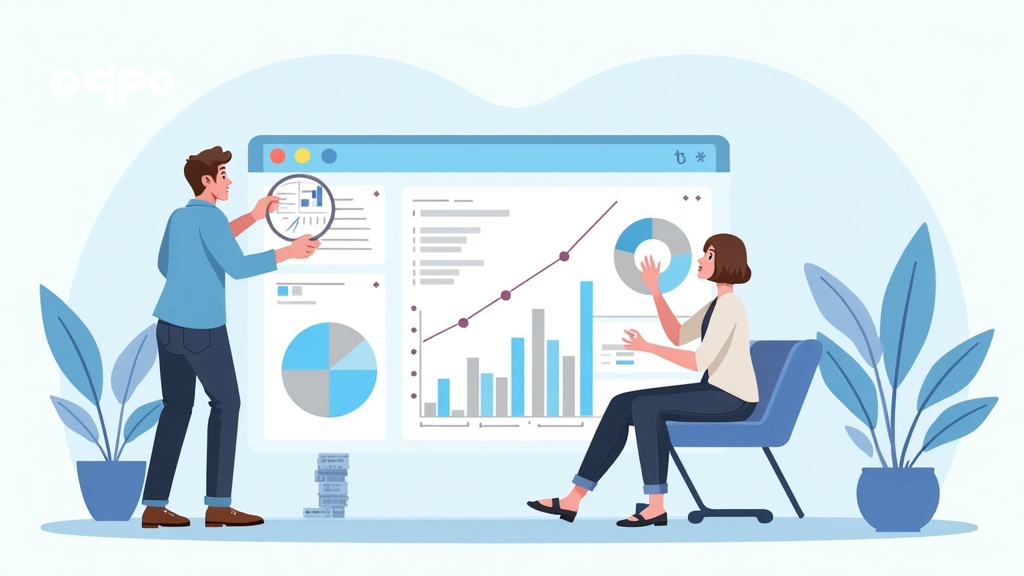Research Methods - Qualitative, Quantitative & Mixed
Guide to research methodologies including qualitative interviews, quantitative surveys, mixed methods approaches, and best practices.
12 min read
Agent Interviews
Updated: 2025-11-13

Introduction to Modern Research Methods
Research methodology forms the backbone of evidence-based decision making across industries, from market research and user experience studies to academic research and business intelligence. In today's data-driven world, choosing the right research method and appropriate research tools can mean the difference between actionable insights and misleading conclusions.
Whether you're a market researcher seeking consumer insights, an academic conducting scholarly research, or a business analyst evaluating market opportunities, understanding the full spectrum of research methodologies is essential for generating reliable, valid, and actionable results.
This definitive guide explores the three primary research approaches: qualitative research methods for deep insights and understanding, quantitative research methods for measurable data and statistical analysis, and mixed methods approaches that combine both for systematic investigations.
Understanding Research Methodology Fundamentals
What Are Research Methods?
Research methods are systematic approaches to collecting, analyzing, and interpreting data to answer specific questions or test hypotheses. They provide the framework for how research is conducted, ensuring that findings are credible, reliable, and applicable to real-world situations, following established academic research standards.
The choice of research method depends on several factors:
- Research objectives: What you want to discover or prove
- Type of data needed: Numerical data, opinions, behaviors, or experiences
- Available resources: Time, budget, and personnel constraints
- Target audience: Who you're studying and how to reach them
- Intended application: How the findings will be used
The Research Process Framework
Every effective research project follows a structured process:
- Problem Definition: Clearly articulating what you want to investigate
- Literature Review: Understanding existing knowledge and gaps
- Methodology Selection: Choosing appropriate research methods
- Data Collection: Gathering information through various techniques
- Data Analysis: Processing and interpreting collected data
- Reporting: Presenting findings in actionable formats
Qualitative Research Methods - Deep Insights and Understanding
Qualitative research focuses on understanding human behavior, motivations, attitudes, and experiences through non-numerical data. This approach is ideal when you need to explore complex phenomena, understand the "why" behind behaviors, or generate new hypotheses.
Key Characteristics of Qualitative Research
- Exploratory nature: Discovers new insights and generates hypotheses
- Flexible design: Can adapt as new findings emerge during research
- Rich, detailed data: Provides deep understanding of context and meaning
- Small sample sizes: Focuses on depth rather than breadth
- Subjective interpretation: Relies on researcher experience for analysis
Primary Qualitative Methods
In-Depth Interviews: One-on-one conversations that explore individual perspectives, experiences, and motivations in detail. Ideal for sensitive topics or when you need personal narratives.
Focus Groups: Facilitated group discussions that reveal social dynamics, group opinions, and how people influence each other's thinking. Perfect for product development and brand research.
Ethnographic Research: Observational studies that examine behavior in natural settings, providing insights into how people actually behave versus what they say they do.
Case Studies: Detailed examinations of specific instances, organizations, or phenomena that provide rich contextual understanding.
When to Use Qualitative Research
- Exploring new markets or consumer segments through market research methods
- Understanding customer motivations and decision-making processes
- Developing new products or services
- Investigating complex social or organizational phenomena
- Generating hypotheses for further quantitative testing
Quantitative Research Methods - Measurable Data and Statistical Analysis
Quantitative research involves collecting and analyzing numerical data to identify patterns, test relationships, and make predictions. This approach is essential when you need measurable, statistically significant results that can be generalized to larger populations.
Key Characteristics of Quantitative Research
- Deductive approach: Tests specific hypotheses or theories
- Structured design: Uses predetermined methods and instruments
- Large sample sizes: Enables statistical generalization
- Objective measurement: Relies on standardized data collection methods
- Statistical analysis: Uses mathematical methods to interpret data
Primary Quantitative Methods
Survey Research: Structured questionnaires administered to large samples to measure attitudes, behaviors, and demographics. The foundation of market research and public opinion polling.
Experimental Design: Controlled studies that test cause-and-effect relationships by manipulating variables and measuring outcomes. Essential for testing hypotheses and proving causation.
Observational Studies: Systematic measurement of behaviors or phenomena without intervention. Useful for tracking trends and patterns over time.
Secondary Data Analysis: Analysis of existing datasets to answer new research questions. Cost-effective way to leverage previously collected information.

Statistical Analysis Fundamentals
Quantitative research relies on statistical analysis techniques to extract meaningful insights:
- Descriptive Statistics: Summarize data characteristics (means, medians, distributions)
- Inferential Statistics: Make predictions about populations based on samples
- Correlation Analysis: Identify relationships between variables
- Regression Analysis: Model and predict outcomes based on multiple factors
- Significance Testing: Determine if findings are statistically meaningful
When to Use Quantitative Research
- Measuring market size and penetration
- Testing product features or marketing messages
- Tracking performance metrics and KPIs
- Validating qualitative insights with larger samples
- Making data-driven decisions requiring statistical confidence

Mixed Methods Research - Extensive Hybrid Approaches
Mixed methods research combines qualitative and quantitative approaches to provide more complete insights than either method alone. This integrated approach leverages the strengths of both methodologies while compensating for their individual limitations.
Types of Mixed Methods Designs
Sequential Explanatory: Start with quantitative research to identify patterns, then use qualitative research to explain the findings. Ideal when you need to understand the "why" behind statistical results.
Sequential Exploratory: Begin with qualitative research to explore a phenomenon, then use quantitative methods to test and validate insights with larger samples.
Concurrent Triangulation: Collect qualitative and quantitative data simultaneously, then compare results to validate findings and provide nuanced understanding.
Embedded Design: One method serves as the primary approach while the other provides supporting data within the same study.
Advantages of Mixed Methods
- Deep understanding: Combines breadth and depth of insights
- Validation: Findings from one method can confirm results from another
- Enhanced interpretation: Qualitative insights explain quantitative patterns
- Methodological flexibility: Can adapt to complex research questions
- Stakeholder buy-in: Provides both statistical evidence and human stories
Choosing the Right Research Method
Selecting the appropriate research methodology requires careful consideration of your specific objectives, constraints, and context. Here's a decision framework to guide your choice:
Research Objective Assessment
Exploratory Questions (What, How, Why): Use qualitative methods when you need to understand complex phenomena, explore new areas, or generate hypotheses.
Descriptive Questions (How much, How many, Who): Use quantitative methods when you need to measure characteristics, frequencies, or relationships.
Explanatory Questions (Why does X cause Y): Use experimental or mixed methods to establish causal relationships.
Practical Considerations
Time Constraints: Quantitative surveys can be faster for large samples, while qualitative methods often require more time for data collection and analysis.
Budget Limitations: Consider costs of recruitment, incentives, technology, and analysis tools.
Sample Accessibility: Some populations are easier to reach through specific methods.
Skills Requirements: Different methods require different analytical skills and software.

Best Practices for Research Excellence
Research Design Fundamentals
- Clear Objectives: Define specific, measurable research goals
- Appropriate Sampling: Choose representative samples for your target population
- Bias Minimization: Design studies to reduce researcher and respondent bias
- Ethical Considerations: Ensure participant privacy and informed consent following IRB guidelines
- Quality Control: Implement checks to ensure data accuracy and reliability
Data Collection Excellence
- Pilot Testing: Test instruments and procedures before full implementation
- Training: Ensure all research team members understand protocols
- Documentation: Maintain detailed records of procedures and decisions
- Real-time Monitoring: Track data quality during collection
- Backup Plans: Prepare for technical issues and recruitment challenges
Analysis and Interpretation
- Multiple Perspectives: Consider alternative explanations for findings
- Context Consideration: Interpret results within broader situational factors
- Limitation Acknowledgment: Be transparent about study constraints
- Actionable Insights: Focus on findings that can inform decision-making through proper qualitative data analysis
- Clear Communication: Present results in formats appropriate for your audience

Technology and Innovation in Research Methods
Modern research increasingly leverages technology to enhance efficiency, reach, and analytical capabilities:
AI-Powered Research Platforms
Professional platforms like Agent Interviews use artificial intelligence research tools to conduct natural, conversational interviews at scale, combining the depth of qualitative insights with the efficiency of automated data collection.
Digital Data Collection
- Online Surveys: Web-based questionnaires with sophisticated logic and multimedia
- Mobile Research: Location-based studies and real-time data capture
- Social Media Analytics: Analysis of naturally occurring conversations and behaviors
- Qualitative Software: Advanced platforms for coding, analysis, and interpretation
- Biometric Measurement: Physiological responses to stimuli and experiences
Sophisticated analytics
- Machine Learning: Pattern recognition in large datasets
- Natural Language Processing: Automated analysis of text and speech
- Predictive Modeling: Forecasting future behaviors and trends with quantitative research tools
- Real-time Dashboards: Immediate access to research findings and insights

Implementation Guide: Getting Started
Phase 1: Planning and Preparation
- Define research objectives and success metrics
- Identify target audience and sampling requirements
- Select appropriate methodologies based on objectives and constraints
- Develop research instruments (surveys, interview guides, etc.)
- Create project timeline and resource allocation plan
Phase 2: Execution and Data Collection
- Recruit and train research team members using professional research panels
- Conduct pilot testing and refine procedures
- Implement data collection protocols
- Monitor quality and progress continuously
- Adapt procedures as needed while maintaining methodological rigor
Phase 3: Analysis and Reporting
- Clean and prepare data for analysis
- Apply appropriate analytical techniques
- Interpret findings within research context
- Develop actionable recommendations
- Create presentations tailored to different stakeholder needs
Conclusion: Building Your Research Capability
Mastering research methods is an ongoing journey that requires both theoretical understanding and practical experience. Whether you choose qualitative approaches for deep insights, quantitative methods for statistical validation, or mixed methods for thorough understanding, the key is matching your methodology to your research objectives and organizational needs.
The research landscape continues to evolve with new technologies, changing consumer behaviors, and emerging analytical techniques. Staying current with best practices, ethical standards, and innovative approaches will ensure your research efforts continue to generate valuable, actionable insights.
Remember that great research is not just about following procedures—it's about asking the right questions, designing appropriate studies, and interpreting findings in ways that drive meaningful action and positive outcomes.
